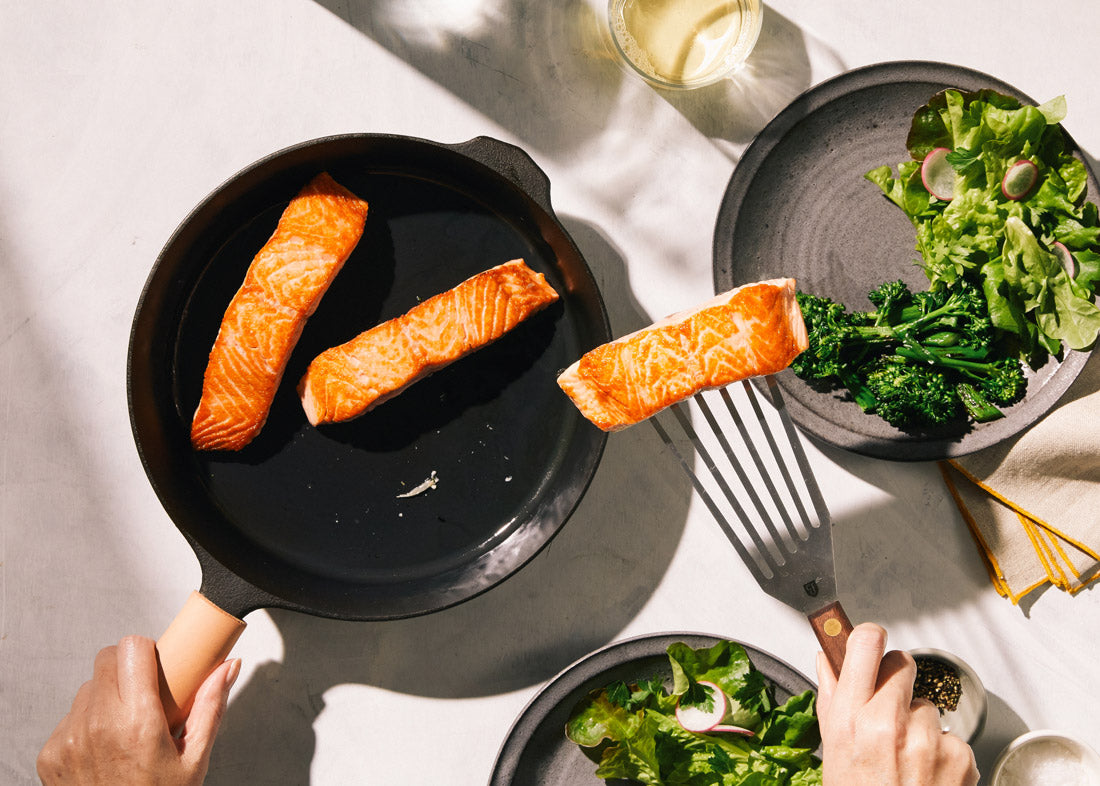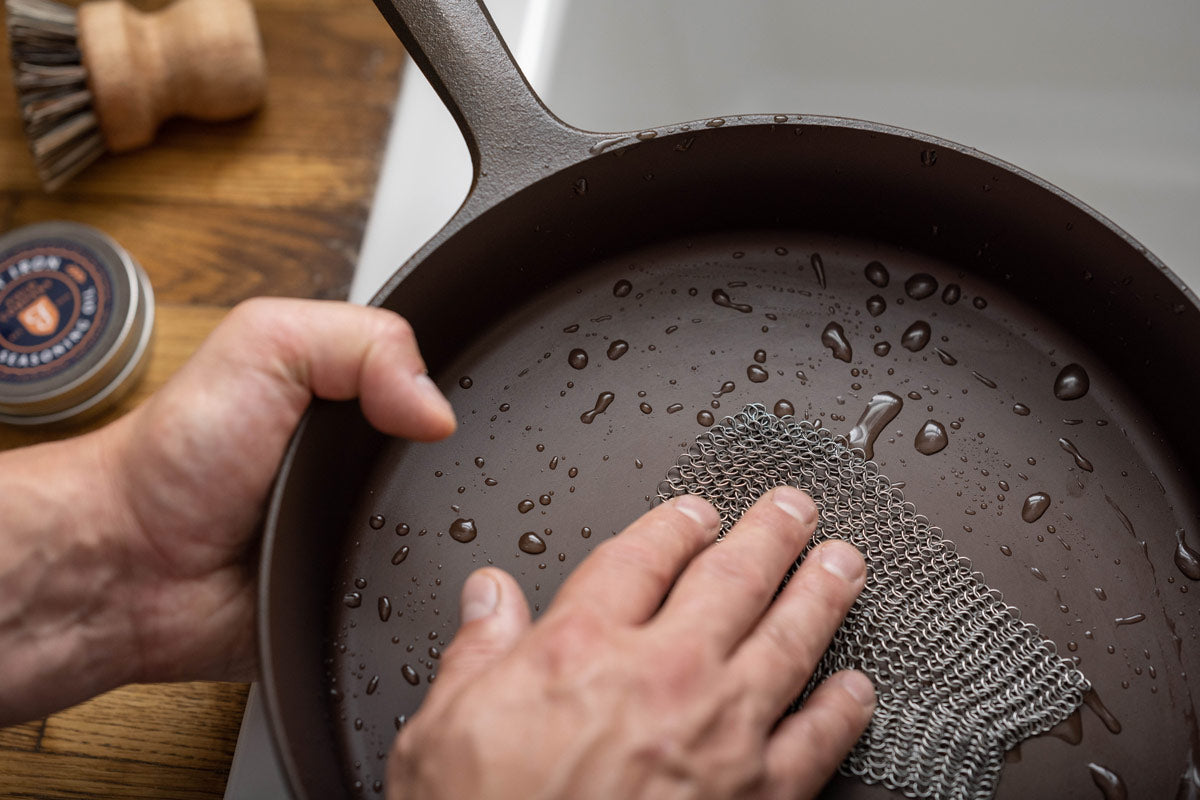On the stovetop, a wide cast iron skillet is the best tool for searing large proteins — think legs of lamb, pork or beef tenderloins, and whole butterflied chickens. Getting an even, complete sear is an art of patience: sear hard, wait for the Maillard to work its magic, turn when it’s ready to release, and repeat. High heat and heavy proteins mean wooden spoons won’t cut it; get yourself a trusty pair of tongs.
Metal tools to avoid
Of course, there are a handful of tools and techniques you really should avoid. Highly abrasive cleaning tools like steel wool should never be used on cast iron; steel wool will remove baked-on food residue, sure, but it’s also likely to remove seasoning and even damage the underlying cast iron. You don’t want that.
Metal spatulas are fine if used for flipping and gentle scraping, but heavy spoons and spatulas can cause trouble if you aren’t careful. Don’t use a metal spatula to chop up food in the skillet, and avoid metal spoons for scooping food off the cooking surface or near the side walls — wooden tools are best options in both cases. Likewise, don’t use knives to carve a roast or slice cornbread while it’s still in the pan. Even a dull knife can scar seasoning with firm slicing pressure applied.




